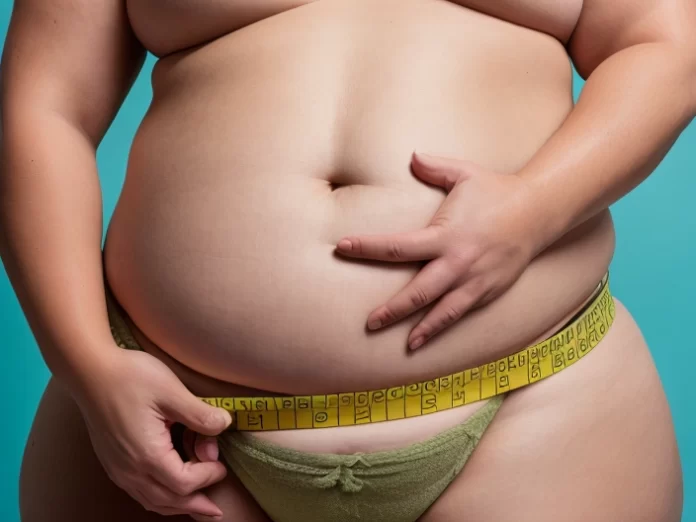Embarking on a weight loss journey requires more than just stepping on a scale. While weight is an important indicator, it doesn’t provide a complete picture of your progress. To truly track your transformation, incorporating accurate body measurements is essential.
In this article, we’ll explore the significance of body measurements, the tools you need, and how to measure your body for weight loss. Understanding and tracking your body measurements will give you valuable insights into your weight loss journey.
People Also Read
Understanding the Role of Body Measurements
Beyond the number on the scale, body measurements offer valuable insights into your weight loss progress. While weight loss can fluctuate due to water retention, muscle gain, and hormonal changes, body measurements provide a tangible record of your transformation.
You can assess fat loss and muscle gain more accurately by tracking inch changes. Measuring different body areas is important since weight loss tends to occur unevenly throughout the body. Moreover, body composition changes, such as losing fat and gaining muscle, may not be reflected by weight alone.
Gathering the Right Tools
To ensure accurate body measurements, you’ll need a few essential tools. A flexible measuring tape is your best friend for this journey. Look for a tape that can easily wrap around different body areas and provides clear markings.
Additionally, consider investing in a body fat calliper. While not mandatory, it can help you track changes in body fat percentage and provide insights into your body composition. Other useful tools include a reliable scale to monitor your overall weight and a mirror to help with proper measurement placement.
Essential Body Measurements to Take
Specific areas should be a priority when measuring your body for weight loss. Start with the waist circumference, as this measurement is closely linked to overall health and excess fat around the abdomen. Use the tape measure around the narrowest part of your waist, usually above your belly button.
Next, focus on measuring your hips and thighs, as these areas often accumulate stubborn fat. Measure around the widest part of your hips and the midpoint of your thighs. Finally, consider measuring your chest at the nipple line for both men and women, as it can indicate changes in muscle mass and fat distribution.
Proper Techniques for Body Measurement
Accurate measurements require proper techniques to ensure consistency and reliability. When using a measuring tape, ensure it is flat against the skin without being too tight or loose. Avoid compressing the tape, as it can distort the measurement.
For consistent results, measure at the same time of day and under similar conditions, such as before breakfast or after using the restroom. These precautions will help you track your progress accurately.
Recording and Tracking Your Measurements
Keeping a detailed record of your body measurements is key to monitoring your progress. Consider using a measurement tracker or a spreadsheet to record your measurements regularly. Update your measurements every few weeks or once a month to allow sufficient time for noticeable changes.
Visualizing your progress by comparing previous measurements can be highly motivating. Consider taking progress photos and noting how your measurements correlate with changes in how your clothes fit. Remember that losing inches might not always reflect on the scale, but it is a sign of positive change.
Interpreting Your Measurements
Understanding the meaning behind your measurements can provide valuable insights into your weight loss journey. Changes in body measurements indicate progress even when the scale stalls. A reduction in waist circumference suggests a decrease in abdominal fat, associated with a lower risk of certain health conditions.
Pay attention to non-scale victories, such as fitting into smaller sizes or noticing increased muscle definition. Remember that your weight loss journey is about more than just numbers; it’s about improving your overall well-being.
Body Measurements and Goal Setting
Utilizing body measurements in goal setting can help you achieve sustainable weight loss. You can set realistic goals beyond losing weight by focusing on specific body areas. For instance, you might aim to reduce your waist circumference by two inches or decrease your body fat percentage by a certain amount.
Celebrate milestones, such as fitting into jeans that previously felt too snug. By incorporating body measurements into your goal setting, you’ll stay motivated and track your progress effectively.
Conclusion
By incorporating accurate body measurements into your weight loss journey, you’ll better understand your progress and achieve long-lasting success. Tracking changes in inches provides valuable insights into fat loss, muscle gain, and body composition changes that a scale alone cannot capture.
Armed with a flexible measuring tape, determination, and consistency, you can embark on a transformative journey towards a healthier, fitter you. Remember, the numbers are just one aspect of your journey, and the real reward lies in the improved well-being and confidence that comes with achieving your goals.
FAQs
How do you measure your whole body for weight loss?
To measure your whole body for weight loss, use a flexible measuring tape to measure key areas such as the waist, hips, thighs, chest, and upper arms.
What measurement is best for weight loss?
Waist circumference is considered one of the best measurements for weight loss as it correlates with overall health and indicates changes in abdominal fat associated with certain health risks.
How do you measure your waist for weight loss?
To measure your waist for weight loss, wrap a measuring tape around the narrowest part of your waist, typically above the belly button, ensuring it is snug but not too tight.
What is the best way to measure body weight?
The best way to measure body weight is using a reliable scale with accurate readings. It’s important to weigh yourself consistently under similar conditions, such as in the morning before eating or drinking, to track your progress effectively.











